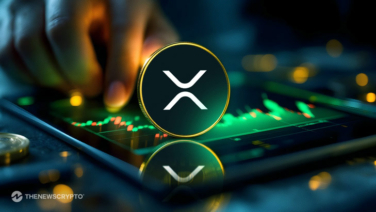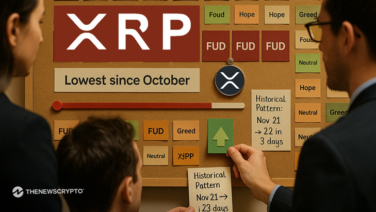- Jake Claver advocates borrowing against XRP holdings rather than selling for profits.
- CEO suggests 30% loan against holdings could provide tax-free liquidity while assets grow.
- Expert warns personal ownership leaves investors vulnerable to lawsuits and forced liquidation.
An XRP community figure has outlined a strategy for holders to generate income from their tokens without selling. Jake Claver, CEO of Digital Ascension Group, recently shared his perspective on building lasting wealth rather than pursuing short-term gains.
As investors anticipate XRP rallying to new price levels, most discussions center on price predictions rather than post-rally planning. Claver argues that knowing what to do after the rally matters as much as waiting for it to occur.
Institutional lending enables new strategies
Claver pointed out that crypto investors belong to a small group, as only 7% of the global population holds digital assets. Triple-A’s latest adoption report confirms this figure, showing 560 million individuals representing 6.8% of the world’s population hold cryptocurrency.
The CEO highlighted tokens including XRP, XLM, XDC, AXL, and HBAR as having strong potential due to real-world applications, partnerships, and growth capacity. He believes these assets could appreciate sharply in coming years, though only those managing holdings wisely will benefit long-term.
Claver criticized traditional retirement advice encouraging decades of saving followed by limited withdrawals. He stated this system no longer functions because the economy has evolved while the advice remains unchanged. Instead, investors should own assets that grow faster than their expenses and use them as leverage to create income without selling.
The executive explained that wealthy individuals already apply this approach with stocks and real estate. Now that institutional crypto lending has matured, investors can implement the same strategy with digital assets.
Borrowing strategy preserves asset growth
According to Claver, holders can borrow against crypto holdings, use a portion of the loan to cover interest, and live off the remainder without triggering taxable events. He calls this the “never sell” approach, allowing assets to continue growing while providing steady income.
Claver provided an example involving XRP reaching $100. An investor holding 10,000 tokens would have $1 million in value. Instead of selling, the investor could borrow 30%, approximately $300,000, against the holdings. Part of that amount could cover interest payments while the rest serves as tax-free liquidity.
This approach protects investors from tax losses while assets continue appreciating. However, Claver warned that many XRP holders make mistakes by keeping assets in personal names.








